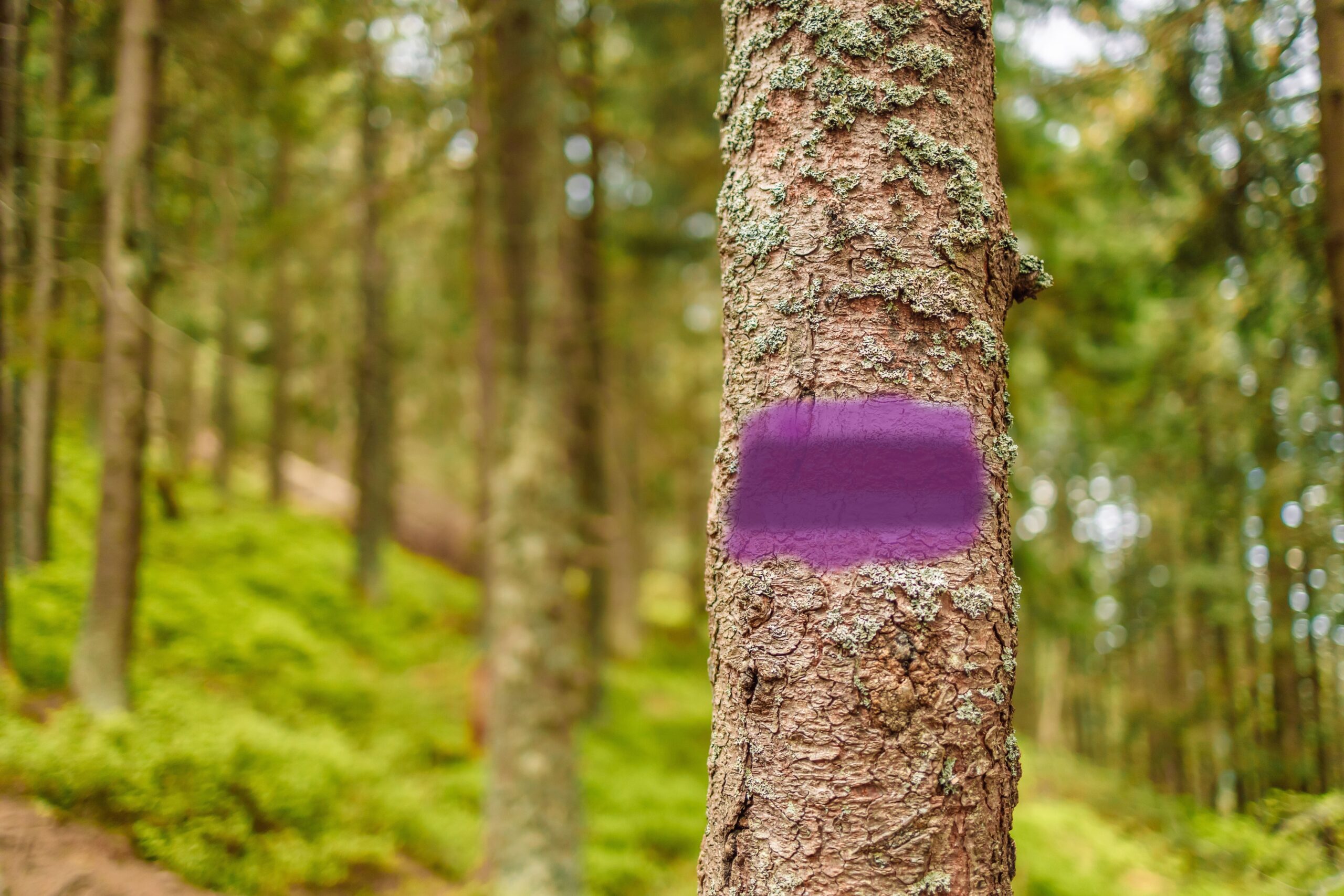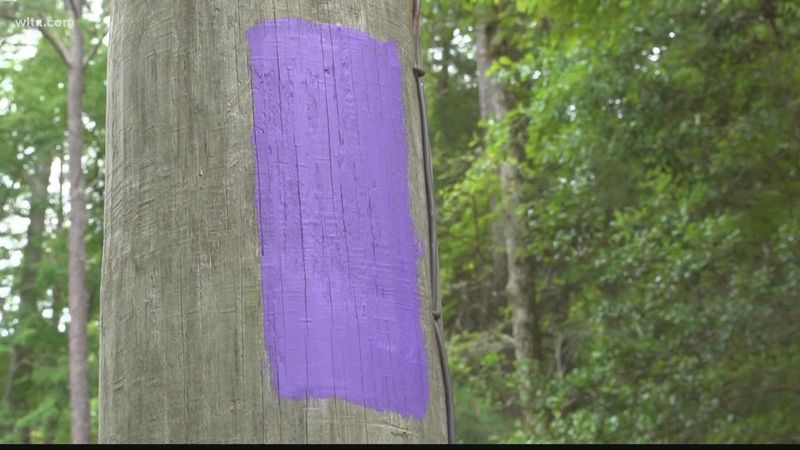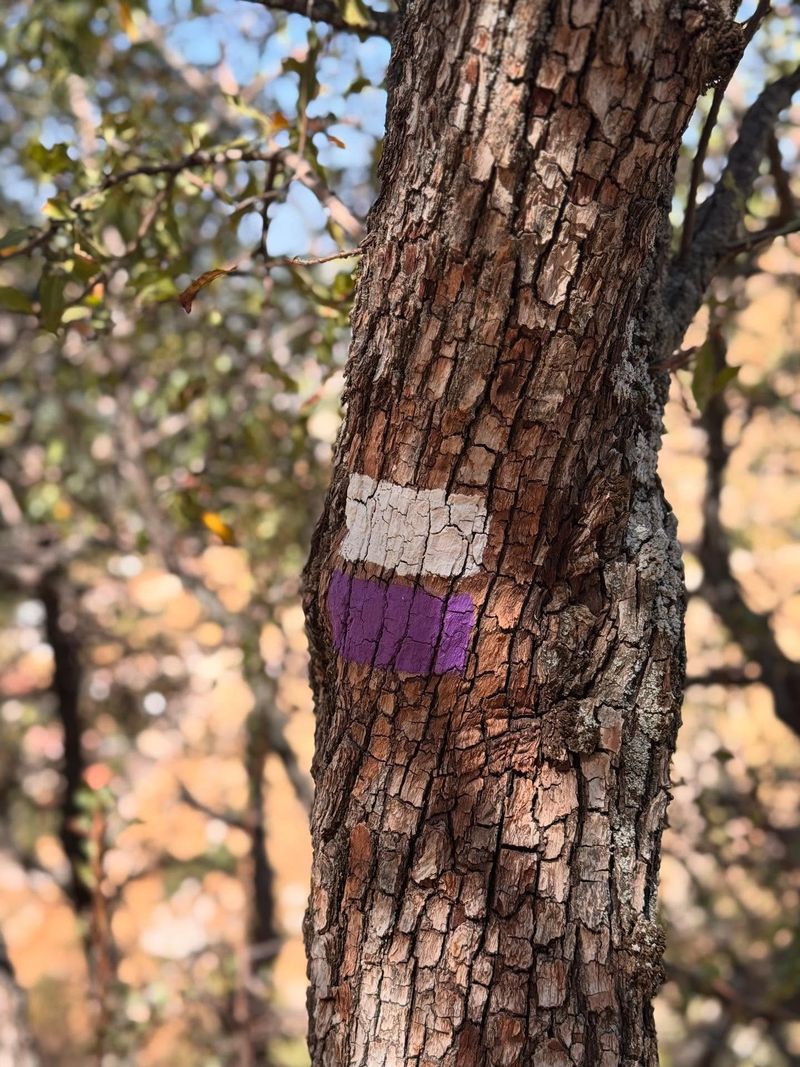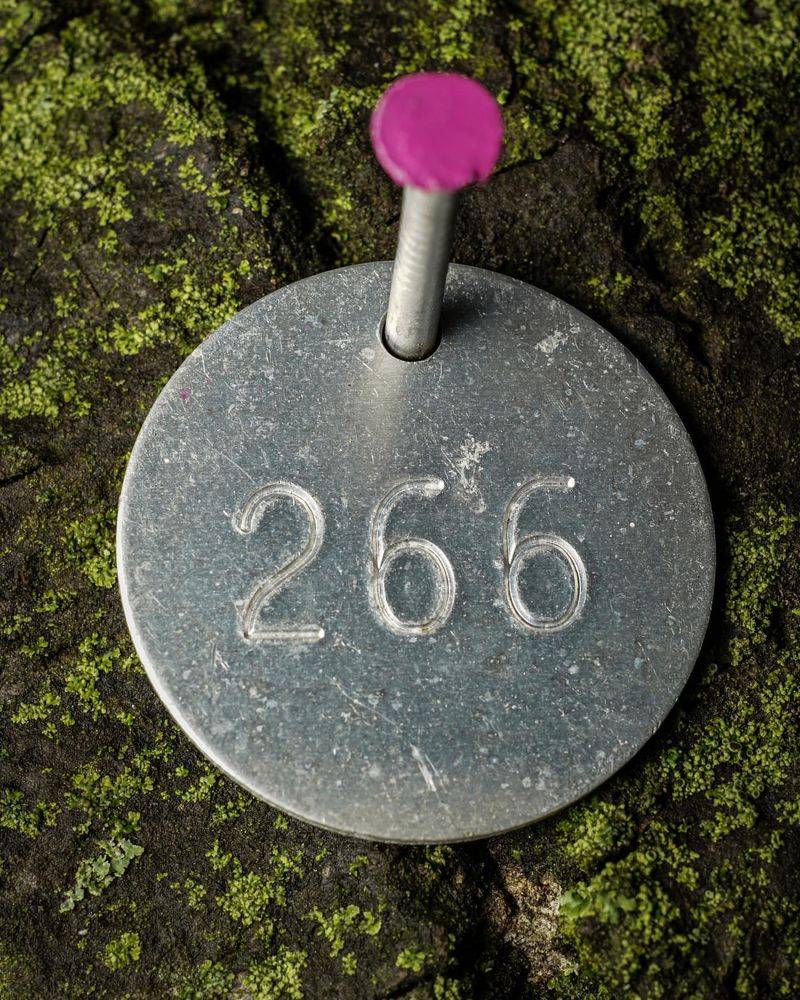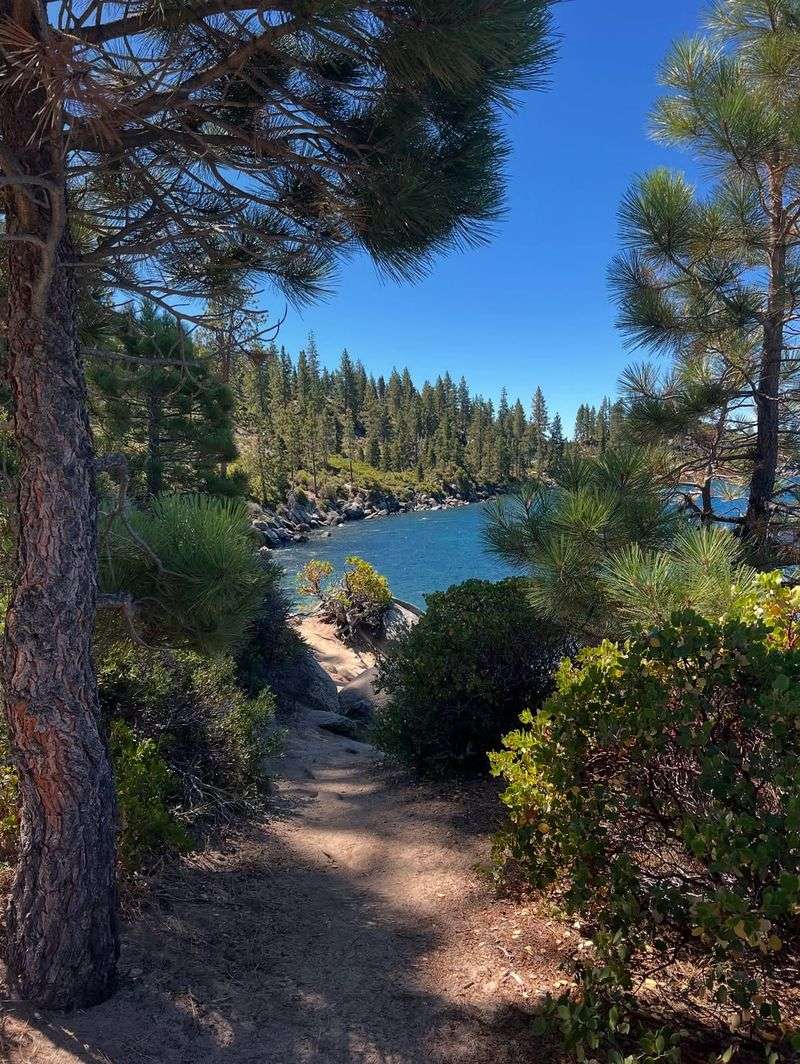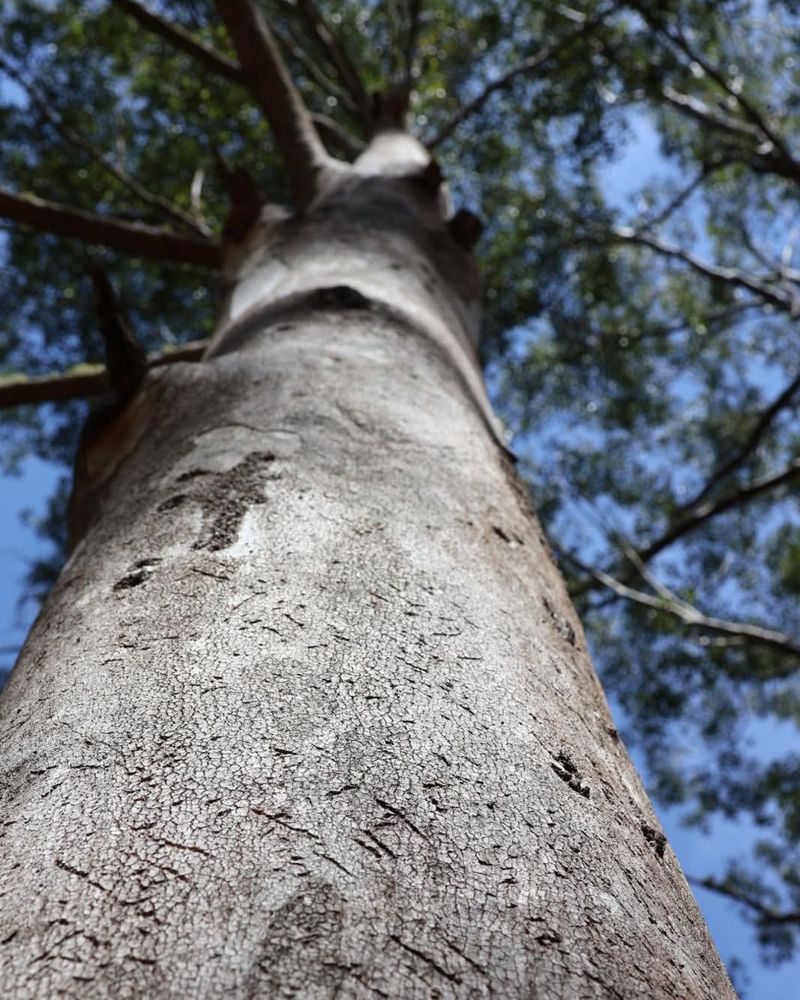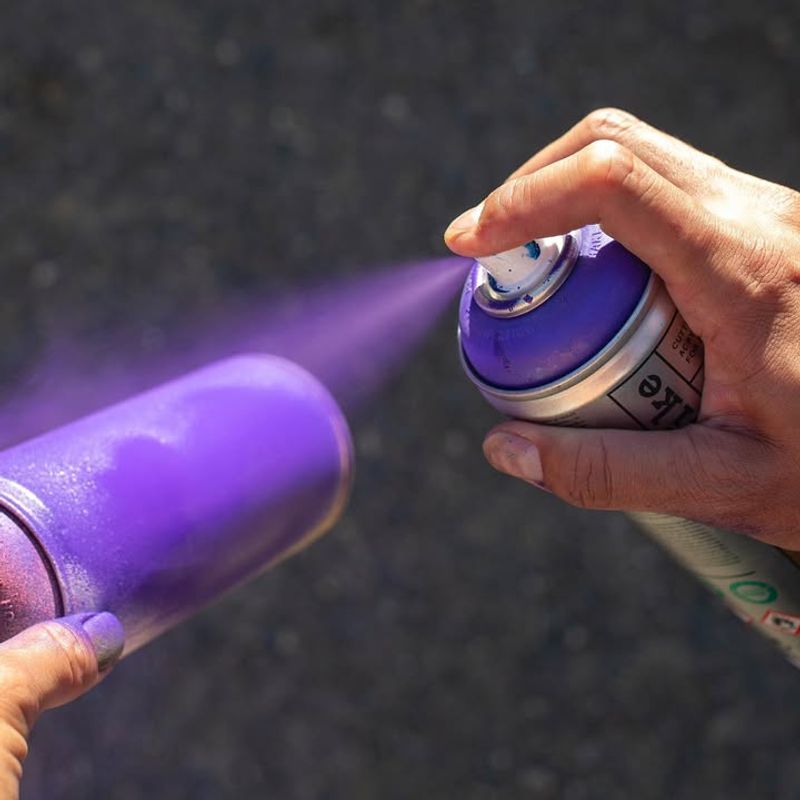Ever spotted a tree with a bright purple stripe painted around its trunk in Nevada? You might have wondered what it means or if someone just got creative with a paintbrush. Actually, purple paint on trees serves important legal and practical purposes that every homeowner and outdoor enthusiast should understand.
Learning about these purple markings can help you avoid trouble and respect property boundaries when exploring Nevada’s beautiful landscapes.
1. Legal No Trespassing Signal
Nevada law recognizes purple paint as an official no trespassing warning. Property owners can mark trees with vertical purple lines instead of posting traditional signs, which often get damaged or stolen.
Purple paint serves as a permanent boundary marker that clearly tells visitors they’re entering private land. Homeowners prefer this method because it’s weatherproof and lasts for years without maintenance.
Respecting these markings keeps you legally safe while hiking or exploring outdoors.
2. Cost-Effective Property Marking
Buying and replacing metal signs gets expensive, especially on large properties with long boundaries. A single can of purple paint costs much less than dozens of no trespassing signs that need constant replacement.
Landowners with acres of property save hundreds of dollars by painting trees instead. Weather, vandals, and rust destroy traditional signs quickly in Nevada’s harsh climate.
Purple paint provides a budget-friendly solution that protects property rights without breaking the bank.
3. Protection Against Vandalism
Metal signs become easy targets for thieves, shooters, and mischief-makers who view them as fun to destroy. Purple paint can’t be stolen, shot down, or carried away like traditional warning signs.
Once applied properly, the paint bonds to tree bark and remains visible for years. Homeowners appreciate not having to constantly check fence lines and replace damaged signage.
Purple markings stay put through wind, rain, and snow while continuing to warn visitors effectively.
4. Clear Visibility Year-Round
Bright purple stands out dramatically against brown bark, green foliage, and even snow-covered landscapes. Unlike faded signs hidden by overgrown brush, purple paint remains highly visible regardless of vegetation growth or seasonal changes.
Hikers and hunters can spot these markings from considerable distances, giving them plenty of warning before accidentally trespassing. Homeowners don’t need to trim bushes around painted trees to maintain visibility.
Clear boundaries help everyone stay safe and legal.
5. Standardized Warning System
Multiple western states, including Nevada, have adopted purple paint laws creating consistency across regions. Outdoor enthusiasts who understand the system in one state automatically recognize the warnings in others.
Standardization eliminates confusion about what different colored markings might mean. Property owners follow simple guidelines: vertical purple stripes placed at eye level on trees or posts spaced appropriately.
Universal recognition makes this system work effectively for protecting private land while educating the public.
6. Environmental Friendliness
Modern purple boundary paint uses non-toxic formulas that won’t damage trees or surrounding ecosystems. Unlike metal signs that rust and leach chemicals into soil, purple paint creates minimal environmental impact.
Trees continue growing healthily with paint marks on their bark. Homeowners concerned about sustainability appreciate marking boundaries without introducing plastic, metal, or harmful substances onto their land.
Purple paint offers an eco-conscious approach to property protection that works with nature rather than against it.

